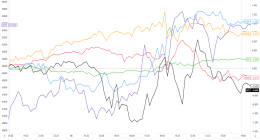

The cartoon archetype of a drunk person is a disheveled mess, with droopy eyelids, an erratic gait, and bubbles coming off their head—for some reason. If only it were so easy to tell if someone’s blitzed out of their mind. If a cop pulls you over, they can only objectively determine intoxication on the roadside with a breathalyzer: In the lungs, ethanol is transferred from the blood into air, so the device can detect alcohol in your exhalation. Even then, one person at the US federal legal driving limit of .08 breath alcohol concentration (BrAC) might act perfectly normal, while another person would be trying unsuccessfully to fish a slice of pizza out of a gutter.
But scientists are working on what might be a new way to determine intoxication, by returning to a stereotypical characteristic of the drunk that’s actually true: that soused walk. No matter how well you think you’re walking when you’re intoxicated—especially if you compare yourself to your friend in the gutter—subtle and not-so-subtle changes in your gait could betray your alcohol level. And if you’re carrying a smartphone, its onboard accelerometer can pick up those changes. In fact, scientists from University of Pittsburgh just published research showing that, in the lab at least, they can use smartphone motion data to detect if a subject is intoxicated, with an average accuracy of 93 percent. It sounds like fun and games—getting people loaded and watching them stumble around for science—but the work could have some serious utility.
Their experiment began with a surprisingly sophisticated drink for the subjects: vodka with lime juice and simple syrup—heavy on the vodka. The subjects had an hour to finish the stiff drink, because the researchers wanted to get them to a peak of .20 BrAC fairly quickly, though of course safely. “We really wanted to have enough data points over the threshold of the legal limit of alcohol, which is 0.08,” says study lead author Brian Suffoletto, then at University of Pittsburgh School of Medicine and now at Stanford University. “So if you’re giving them a lower dose, you may only get one or two time points before the body sort of metabolizes the alcohol.” Also, there are only so many hours in a lab day—no sense in waiting around for the subjects to leisurely build a buzz.
Before the drinking, the researchers had strapped ordinary smartphones to the lower backs of the subjects to get an idea of their baseline gaits. They had the participants walk 10 steps forward, turn around, and walk and 10 steps back. The subjects then repeated this strut while intoxicated, doing it once an hour over the course of 7 hours as their BrAC peaked and waned. All the while, the smartphone was logging motion data.
Because each participant had their own unique sober gait and unique intoxicated gait, Suffoletto and his colleagues used individualized mathematical models that allowed them to compare each person against himself or herself. “We found that, really, what was driving the model is the medial-lateral sway,” says Suffoletto. That means lurching side to side; your typical sober gait is more or less down the line. “Which kind of makes sense when you think about the caricature of the drunk cartoon, a figure who kind of is swaying back and forth,” he continues.
The model of each person’s particular gait allowed the researchers to correctly identify over 90 percent of the time when a subject’s BrAC passed .08. Of course, in the real world, most people don’t strap their smartphones to their lower backs, but the researchers are planning to do further experiments with subjects carrying the devices in their hands or pockets.








